Seabirds are both terrestrial and marine animals. They depend on both realms to survive – and so they are also affected by threats in both environments.
Overfishing
Bycatch
Pollution
Energy Development
Hunting & Trapping
Disturbance
Invasive Species
Light Pollution
Climate Change
Overfishing - Depletion of a birds’ food supply through fishing
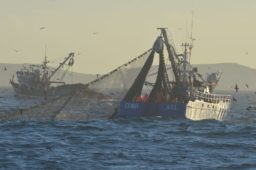
@Patricio Ortiz
- Growing problem for seabirds, with more than 50 species currently impacted
- Number of threatened species affected more than doubled during the last 10 years
- More than 100 million individual seabirds are exposed to this threat
Overfishing is the main cause of decline of at least 24 species and is also often associated with other threats at sea, such as bycatch and decrease in prey abundance due to changing oceanographic conditions near the colonies.
BirdLife is working towards the creation of well-managed Marine Protected Areas to help address overfishing. It is also promoting the effective implementation of ecosystem-based management of forage-fisheries within the context of wider, multi-stakeholder Marine Spatial Planning.
Bycatch - The incidental catch of non-target species
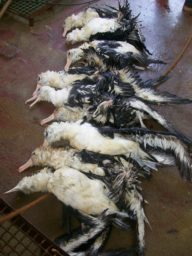
@Leo Tamini
- Affects 100 seabird species worldwide
- Some groups particularly affected are: albatrosses, shearwaters and large petrels, penguins, auks, sea ducks and cormorants
- Almost 200 million seabirds worldwide are exposed to this threat
BirdLife is working hard to address bycatch in fisheries. The Seabird Tracking Database (initially known as the “Global Procellariform Tracking Database”) was created to inform our conservation efforts to address this issue, via the Albatross Task Force and our policy work with the Regional Management Fisheries Organizations (RFMOs).
Tracking data compiled in the Seabird Tracking Database have been used to analyse the areas of highest bycatch risk across the oceans and inform numerous governmental and inter-governmental bodies on how and where to implement mitigation measures.
Read more in the case study below.
Pollution - Harmful substances in the environment
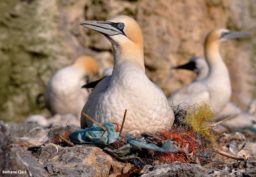
© Bethany Clark
- Oil pollution in the oceans is improving and now less threatened species are affected
- Still, almost 70 species globally are impacted by pollution
- Plastics is not (yet) a cause of major populations declines on seabirds. However…
Plastic pollution is an emerging threat that is increasingly affecting seabirds in every ocean basin. We still know very little about the potential lethal effects of plastic contamination in seabirds, and the population-level effects it may cause.
BirdLife is working to improve our understanding of plastic exposure in small petrels, in a study using seabird tracking data and plastic distribution - read more here.
Energy development - Oil and gas extraction, or offshore renewable energy
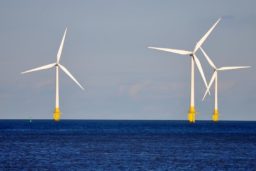
©Martin Pettitt
- Oil & gas platforms can pose a serious threat to seabirds, particularly to small petrels – which are attracted by the lights of the flares
- Offshore windfarms can also impact seabirds via collision or displacement
Offshore wind farming is a fast-growing issue with potentially large impacts on seabirds, but we still have limited information on the consequences for seabirds at the population level. This threat is expected to affect mostly coastal species such as divers, scoters, terns and shags.
Hunting/Trapping - The harvest of seabirds or eggs for commercial, recreation or subsistence purposes
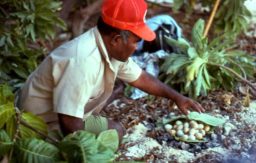
© David Anderson
- Almost 100 species of seabirds globally are harvested for their eggs or meat
- Along with disturbance, this is the top threat to coastal globally threatened species, affecting half of these species
Hunting/trapping at colonies is the second major threat on land in terms of number of species affected. Seabird hunting and egg collection are still common practices in many seabird colonies around the world, from the Arctic to tropical regions. Seabirds are also hunted at-sea, although the scope and severity of this issue is far less known.
Disturbance - Human activities (including recreational) that alter seabirds' normal behaviour or their habitats
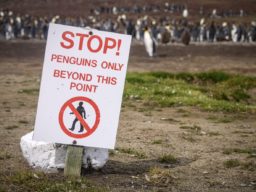
© Steph and Oli Prince
- More than 70 seabird species are affected by disturbance
- Along with hunting/trapping, it is a major threat to coastal globally threatened species
- Penguins are also particularly affected, due to increasing tourism in remote areas
Disturbance of seabirds at their colonies can lead to reduced breeding success or even to permanent abandonment of their nests. The increase in ecotourism can pose an additional challenge, which can be mitigated by implementing regulations to control access to important seabird colonies.
Invasive Alien Species - Predation or habitat degradation caused by non-native species
- Affects almost half of all seabird species globally
- Most groups of seabirds, including the most threatened ones, are affected by invasive predators
- Rats and cats are particularly problematic
Invasive alien species are the major threat to seabird species globally, affecting 165 species (73 of which are threatened with extinction). Seabirds breeding on isolated islands are particularly vulnerable – predation by introduced rats and cats is an extra source of mortality (especially in eggs and chicks, but often also in adults), and is the main cause of decline for more than 100 species.
Light pollution - Excess artificial light at night
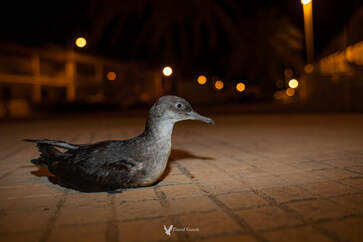
© David Garcia
- Light pollution affects many seabird species, in particular petrels and shearwaters
- Artificial lights near the colonies are particularly problematic for fledgling seabirds
Light pollution is a known threat to many fledgling seabirds around the world – when they leave the nest for the first time, they are often attracted to artificial light sources (such as streetlights or lighthouses), and become disoriented, resulting in injury or death.
The problem of light pollution at sea (including collision with ships or oil platforms) is still poorly known.
Climate change - Effects of long-term climatic changes, including severe weather events
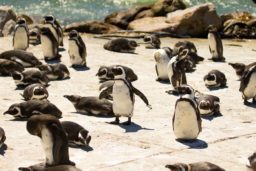
- Climate change impacts almost 100 species globally
- Almost 200 million individual seabirds are exposed to the adverse effects of climate change
- Penguins are particularly affected by this problem
Climate change impacts seabirds in many ways – via habitat shifting and alteration (e.g. changes in oceanographic processes and prey distribution around colonies), sea level rise and floods (resulting in inundation of colonies), increased frequency of extreme weather events (such as extreme temperatures and storms), and increased occurrence and virulence of avian pathogens. Translocations of nests and colonies can alleviate the negative impacts of climate change in some cases.
BirdLife is addressing this serious problem via a dedicated programmatic area of work – read more here.
Our understanding of the main threats to seabirds and how species are impacted guides BirdLife’s conservation and advocacy work. Read more about our policy work here.
Please view this page on a desktop computer to see our interactive Threats to Seabirds feature.
Using tracking data to address bycatch
Understanding where and when animals are under threat is crucial for directing conservation efforts to where they are most needed. This is particularly true for seabirds, who face widespread threats at sea, including accidental capture (bycatch) in fisheries. While some fisheries have already reduced seabird bycatch by 80% by adopting mitigation measures, bycatch is still causing declines in many seabird populations.
Over the last few decades, researchers have used electronic tracking devices attached to a wide range of seabird species to record bird movements, providing unprecedented insight into the lives of birds at sea. BirdLife has been working in close collaboration with researchers to compile this data to help address the threat of bycatch – we established the Global Procellariiform Tracking Database in 2004, which then evolved to hold data for all seabird species – the current Seabird Tracking Database. We can now overlap seabird distributions with fishing effort to predict hotspots of risk – information that is vital for stakeholders and policy makers to target bycatch mitigation work and protect seabirds from unnecessary deaths in fisheries.
BirdLife researchers have developed a framework that integrates multiple sources of data to identify seabird hotspots at sea. Working with collaborators around the world, we used tracking data from over 4,000 individual birds to map the at-sea distributions of 22 seabird species of global conservation concern and quantify overlaps with fisheries. While many tracking studies focus solely on breeding adults, we showed that including data from juvenile, immature, and non-breeding adult birds is vital for estimating the full extent of risk from fisheries.
Tristan Albatross from Gough Island, South Atlantic. Non-breeding adults and juveniles disperse more widely than breeding adults and have higher overlap with longline fishing effort, which may mean increased risk from bycatch. Source: Carneiro et al. (2020). Thanks to our data contributors.
Population Overlap With Fishing Effort
Source: Carneiro et al. (2020). Thanks to our data contributors